Heritage is about our future as much as our past
As debate continues over the proposed demolition of an historic precinct to make way for a new hospital in Adelaide, it’s timely to re-examine our state’s heritage and its capacity to create value, opportunity and a lucrative future for South Australia.

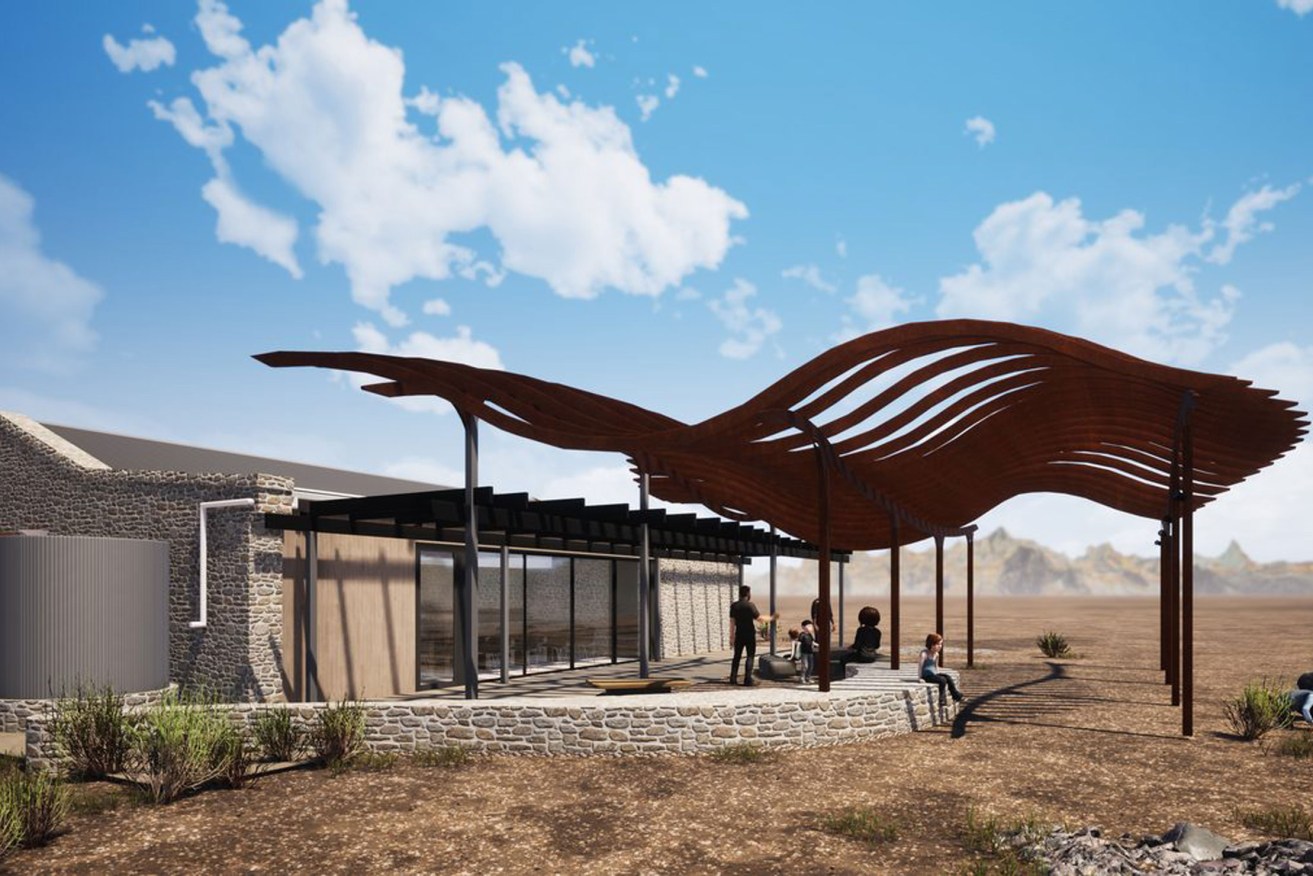
The Nilpena Ediacara National Park Visitors’ Centre makes use of Nilpena Station’s former Blacksmith’s Shop. Image: Department of Environment and Water
South Australia’s heritage is not so much about the past as it is about the future. Made up of what we have inherited from the past, heritage highlights what we continue to value and appreciate in the present, and what we decide to protect and pass on to future generations.
According to contemporary definitions, this heritage comprises:
the tangible – our historical landscapes, towns, parks and gardens, streetscapes, buildings, monuments, museum collections, rock art, archaeological sites, shipwrecks, artefacts and archives;
the natural – our natural landscapes, oceans, waterways and wetlands, the outback, forests, bushland, trees, plants, animals, birds, insects and fossils; and
the intangible – our Aboriginal cultures and languages, sport, music, dance, crafts, technical skills, social and religious practices and multicultural traditions.
There is also continuing debate about whether we should be separating the cultural and the natural at all, as both Aboriginal and contemporary viewpoints come to regard nature and culture as being one and the same. Our natural and built environments, stories, lifestyles and shared memories nevertheless provide South Australians with a common language that enables us to communicate with each other on many levels, and to express ourselves in distinctive ways to the outside world.
In helping shape our identity, heritage becomes part of what we are and what we value, highlighting our history and priorities over time. It provides clues to the past and how the South Australian landscape has evolved through the ages. It helps us understand and explain why we are the way we are, and to determine where we want to go from here.
Heritage also plays an important role in our politics, society and world view, informing, influencing and inspiring public debate.
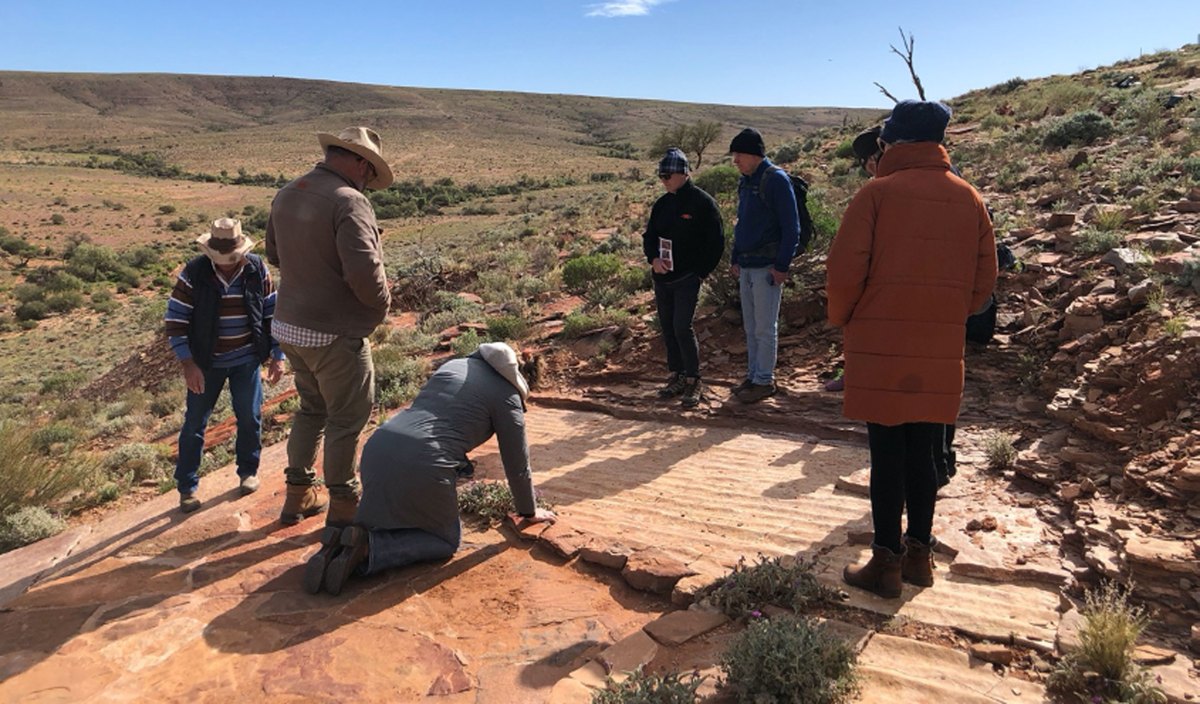
Ediacaran fossils and geology are studied, managed and protected on site at Nilpena Ediacara National Park. Photo: Stephanie Johnston
Identifying, protecting and managing these valued places, objects and pastimes ensures that they continue to be experienced, enjoyed and practised into the future. Practically, this is managed by various levels of government in collaboration with custodians in the broader community. Important and representative heritage places and cultural traditions are carefully identified and grouped into lists that reflect historic, social, aesthetic and scientific values which in turn guide their protection and management.
At the global level, UNESCO’s world heritage list recognises places and cultural practices that represent the course of our planet’s history. Australia has just 20 world heritage sites to its name, and South Australia has only one: the Naracoorte Caves in the state’s south-east. Naracoorte and Riversleigh, in Queensland, together form what is known as the Australian Fossil Mammal Site.
In April this year the Flinders Ranges Ediacaran sites were added to Australia’s tentative list for world heritage, and a number of other globally important South Australian sites and landscapes aim to follow suit. These include the Burra and Moonta copper mining sites, the Adelaide city plan and park lands, and the distinctive cultural landscapes of the Mount Lofty Ranges – all of which bear witness to South Australia’s ground-breaking planning and migration history.
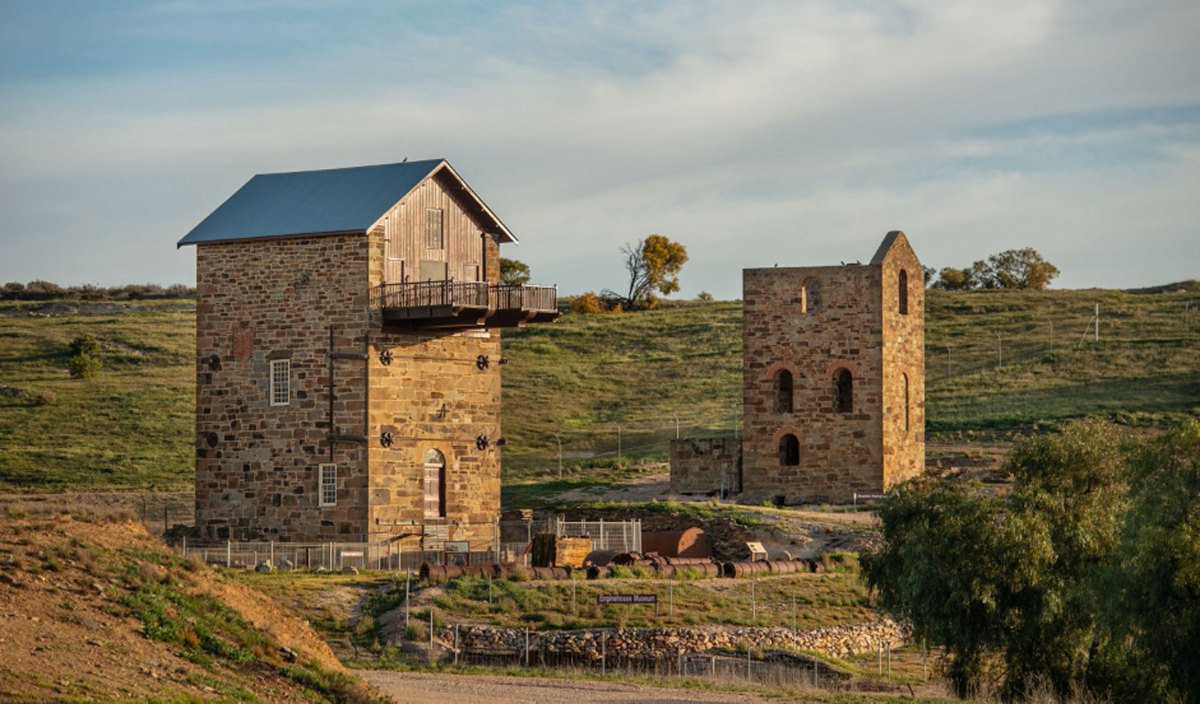
Burra Copper Mine. Photo: Heidi Who Photos
The Adelaide park lands and city plan have already been recognised on the Federal Government’s national heritage list as being of importance to all Australians, while the Burra and Moonta mining sites sit on the same list as two places in Australia where the evidence of Cornish mining technology, skills and culture is of national significance. The entire town of Burra is national heritage-listed and has also been designated a state heritage area since 1993, one of 17 such areas that have been recognised by the State Government as reflecting heritage values of significance to all South Australians.
After considering an assessment undertaken in 2017, the State Heritage Council recommended that the Adelaide park lands, squares and city layout also be listed as a state heritage area, but this recommendation is yet to be acted on by the State Government.
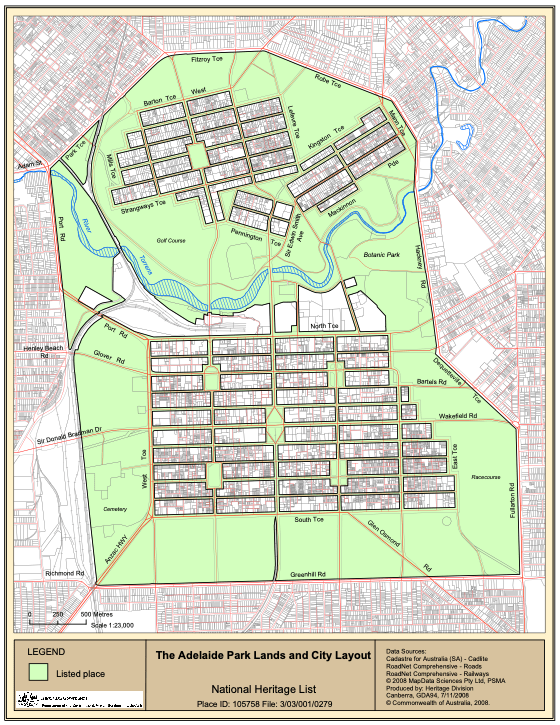
The Adelaide Park Lands and City Layout are protected under the Federal Government’s Environment Protection and Biodiversity Conservation Act 1999, but are yet to be recognised by the State Government. Source: Commonwealth of Australia, 2008
At the local level, communities often take responsibility for, and participate in, the cultivation and conservation of their heritage. South Australia’s National Trust plays an important role in re-energising neglected heritage places and providing opportunities for local people to review, re-engage and reinterpret that heritage. Currently on exhibition in Onkaparinga Arts Centre, the Art of Willunga District’s Built Heritage is one such project which shows how shared heritage can inspire a sense of pride and belonging in a community.
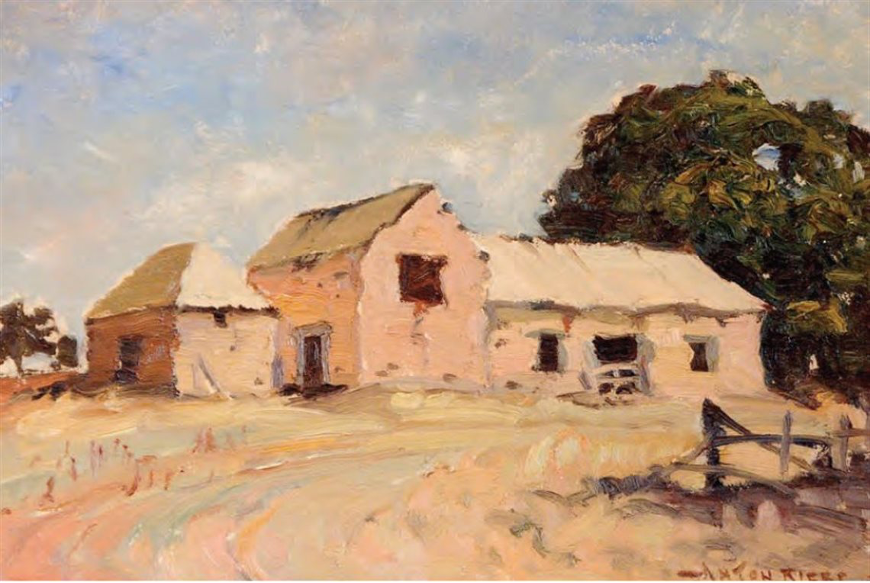
Old Barns, Aldinga, by Anton Riebe, is on show in the exhibition Art of Willunga District’s Built Heritage.
Crucially, maintaining and regenerating the state’s natural and cultural heritage provides a basis for economic development and innovation in tourism, agriculture, education, health and wellbeing, recreation and business in general. As we have seen in previous articles, this regeneration can occur in a city precinct or at a regional scale.
A new report detailing the potential benefits of international recognition for the Victorian goldfields has found a world heritage listing would be worth $1 billion to the regional economy.
The opportunity for world heritage sites to generate economic gains was previously highlighted in a 2009 report, commissioned by the UK’s Lake District World Heritage Project, which explored 13 international case studies. Since then, there have been ongoing studies and monitoring of economic impact by UNESCO.
As we debate the proposed demolition of an entire heritage precinct to make way for a new hospital and car park, it might be time to re-examine our state’s heritage through the lens of future-making, where heritage management is viewed as the imagining and planning of alternative kinds of futures for South Australia.
The capacity of the heritage sector to contribute to the curation of a desirable future, to create value and opportunity, and to seed unexpected outcomes for our city and regions should not be underestimated.
Stephanie Johnston is an urban planner and member of the State Planning Commission. The views expressed here are her own.
Art of the Willunga District’s Built Heritage is showing at Onkaparinga Arts Centre in Port Noarlunga until October 24.




